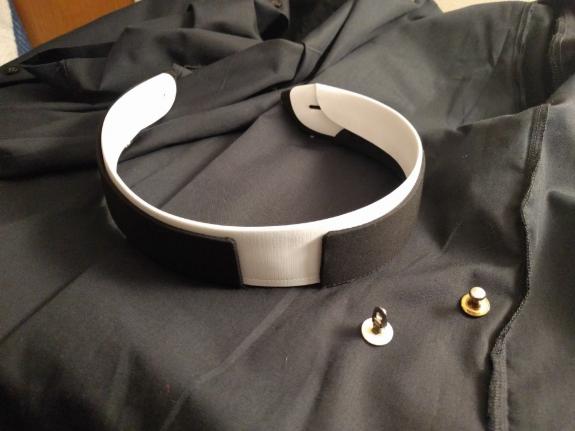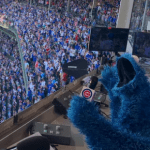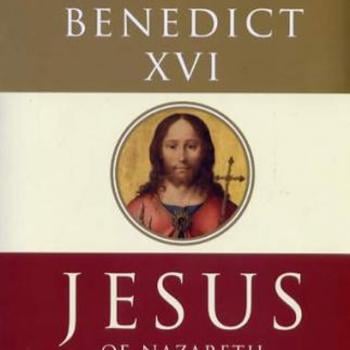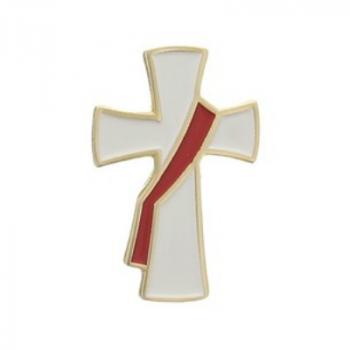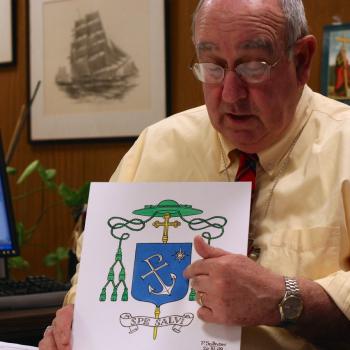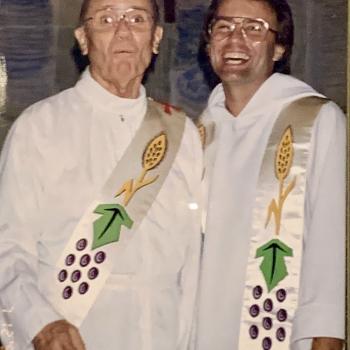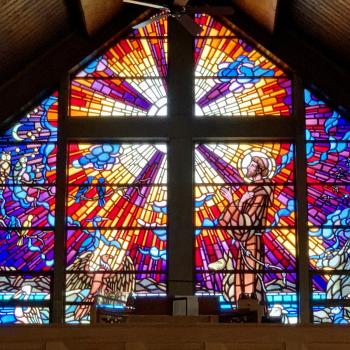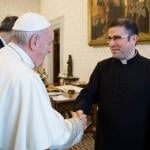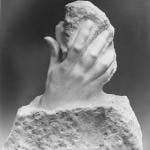On Facebook this morning, some deacons were discussing the wearing of “clerical garb.” A deacon wrote:
“We in the Archdiocese of San Francisco received official word from the archbishop’s office that at the recent USCCB meeting the National Directory for the Permanent Diaconate was revised and approved. The bishops decided to keep the prior decision that the proper dress of permanent deacons was “lay attire” (dress like the people whom they serve).
So whereas prior to this our archbishop encouraged us to wear the collar for our ministries and Sunday Masses we will now now longer be allowed to do so. It is reserved to a few restricted situations where the collar and GRAY shirt (not black) are to be worn. The now official clerical dress for deacon is stated as “the deacon lapel pin” (sounds to me like the1970’s Sisters shedding the habit for lay clothes and “identity pins”). For liturgical rites outside of Mass (including wakes & burials) we are to wear alb or cassock/surplice and stole.”
1) There is NO new policy in the revised National Directory. It remains the prerogative of the diocesan bishop to establish whatever policy he determines best for his diocese. This has been the position of the USCCB since the very first “Guidelines” were published (the so-called “green book”) back in 1971.
At times, including during my tenure on the USCCB staff, attempts were made to made to establish either a regional or national policy on deacons and clerical attire; the full body of bishops voted such proposals down each and every time — and resoundingly! The reason was that each bishop wanted to retain autonomy over that decision. It was also brought out that there is no national or regional policy on ANY clerical attire for any cleric, including priests. The diocesan bishop is free to decide that he wants all of his clergy to wear orange mini-cassocks if he so chooses. “Distinctive clerical attire” is whatever the bishop says it is. So, bottom line on this point, if the archbishop of San Francisco is going to change his policy, it is NOT because of any “change” to the National Directory; no such change was made.
2) Someone commented that he wished someone had actually asked deacons about this. Believe me, deacons around the country WERE consulted, many, many, many times — directly, and through the diocesan deacon directors. For every deacon who wants or needs to wear clerical attire, there are deacons who oppose it. Personally, in my nearly 30 years as a deacon, I’ve been in dioceses where we wear clericals and where we don’t. Frankly, there are advantages and disadvantages — and it is precisely this fact that leads bishops to want to tailor this policy to their own pastoral situation. But deacons have been consulted on this and other matters since at least 1996 when we began the drafting process of the first edition of the National Directory. Deacons were also involved in the 1971 national guidelines (the green book) and the 1984 national guidelines (the red book). I would recommend that you also make sure your directors be made aware of your thoughts on this and other matters so they can so advise the bishop.
3) I’ve reviewed the revised Directory and there simply are not that many changes to it, especially in terms of things like this. The content of documents such as this is the result of the input of — literally — hundreds of people. While small writing teams can put the final touches to it for the bishops, and the bishops themselves spend a lot of time working on it directly, it’s important to remember that it has been a collaborative process involving deacons, wives, priests, bishops, diaconate organizations and so on.
Finally, remember that the fact that the bishops have approved the document does NOT mean it’s ready to be implemented. It still has to go to the Holy See for a formal “recognitio” and that can take a while, especially if the Holy See wants additional changes made.
Meantime, I am incardinated in one of those dioceses, Brooklyn, where deacons do not wear the Roman collar, ever. Not even for wakes or public ministry (hospital visits, prison services, etc.). In my travels, however, I have found more places where deacons are going with the Roman-collar-with-grey-shirt combo. Is that a trend? We’ll see.
Bottom line: as it was, so it is. It’s still the bishop’s call.

